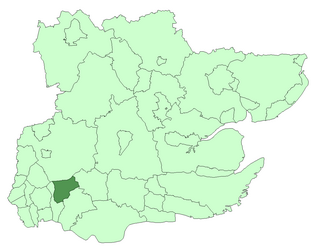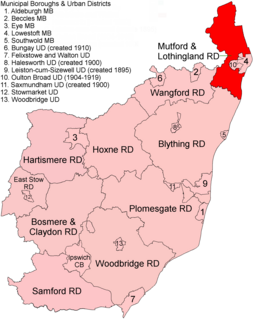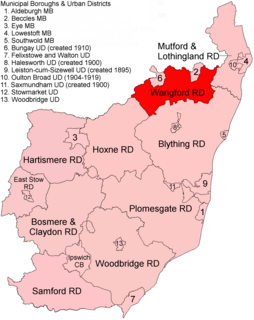| Kingswinford | |
|---|---|
| Area | |
| • 1911 [1] | 5,691 acres (23 km2) |
| Population | |
| • 1911 | 20,803 [2] |
| • 1931 | 22,804 [2] |
| History | |
| • Created | 1894 |
| • Abolished | 1934 |
| • Succeeded by | Brierley Hill Urban District Seisdon Rural District |
| Status | Rural District |
| Government | Rural District Council |
| • HQ | Kingswinford |
Kingswinford Rural District was a rural district in Staffordshire, England from 1894 to 1934. [3] It was created by the Local Government Act 1894, and originally consisted of the two parishes of Amblecote and Kingswinford. Amblecote became a separate urban district in 1898, leaving Kingswinford the only parish in the district.
Rural districts were a type of local government area – now superseded – established at the end of the 19th century in England, Wales, and Ireland for the administration of predominantly rural areas at a level lower than that of the administrative counties.

Staffordshire is a landlocked county in the West Midlands of England. It borders with Cheshire to the northwest, Derbyshire and Leicestershire to the east, Warwickshire to the southeast, West Midlands and Worcestershire to the south, and Shropshire to the west.

England is a country that is part of the United Kingdom. It shares land borders with Wales to the west and Scotland to the north-northwest. The Irish Sea lies west of England and the Celtic Sea lies to the southwest. England is separated from continental Europe by the North Sea to the east and the English Channel to the south. The country covers five-eighths of the island of Great Britain, which lies in the North Atlantic, and includes over 100 smaller islands, such as the Isles of Scilly and the Isle of Wight.
The district was abolished in 1934 under a County Review Order. Most of the parish was added to the Brierley Hill Urban District, with Prestwood and Ashwood becoming to the parish of Kinver in the Seisdon Rural District. Since 1974, the former now forms a part of the Metropolitan Borough of Dudley in the West Midlands, whilst the area in Kinver is in the South Staffordshire district.

The Local Government Act 1929 was an Act of the Parliament of the United Kingdom that made changes to the Poor Law and local government in England and Wales.

Brierley Hill Urban District was a former Urban District in Staffordshire, England, comprising the areas of Brierley Hill, Kingswinford, Quarry Bank, and Pensnett, now within the modern-day Dudley Metropolitan Borough in the West Midlands county.
Prestwood is a hamlet now in the parish of Kinver, but in the Kingswinford until the creation of Brierley Hill Urban District in the 1930s.










